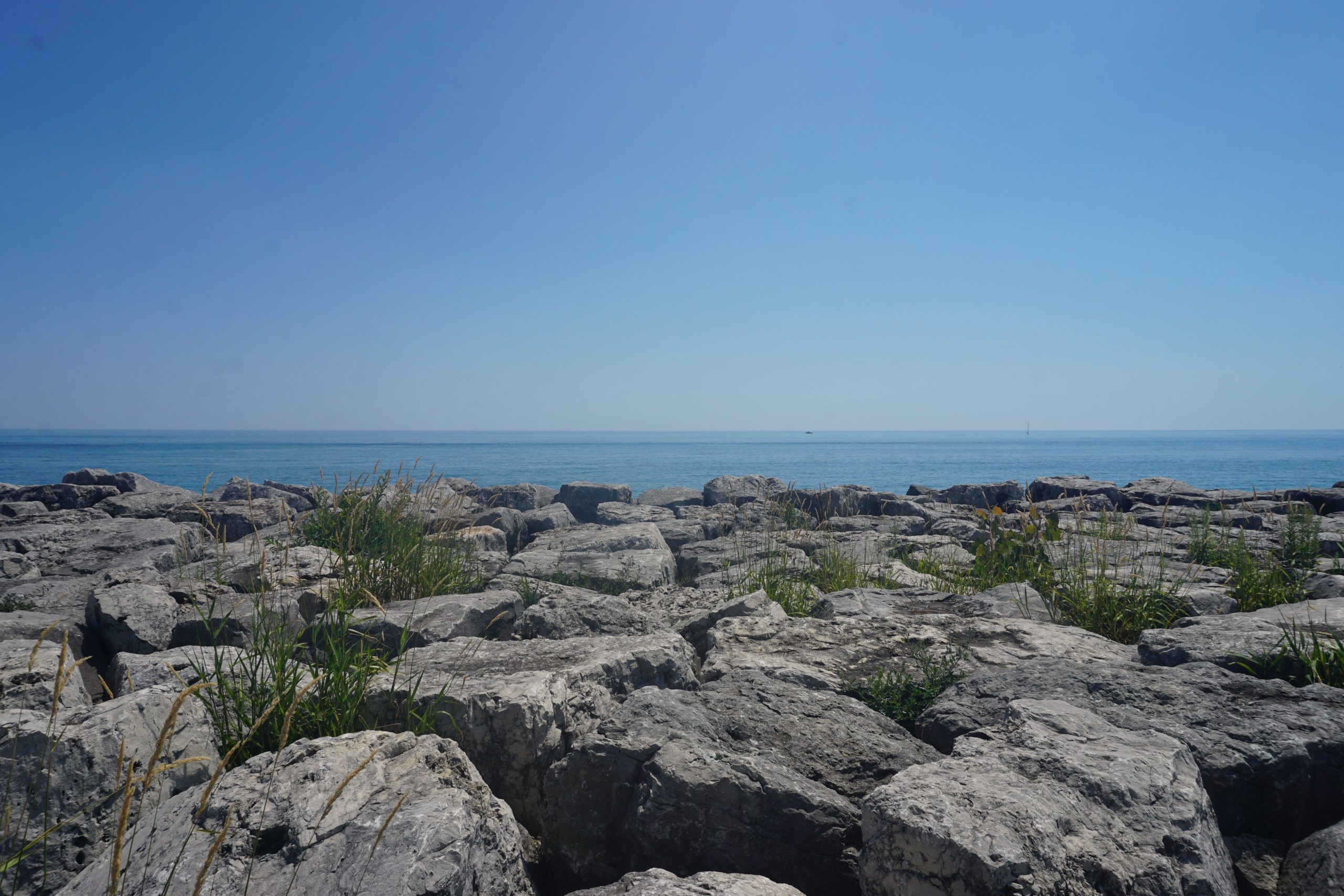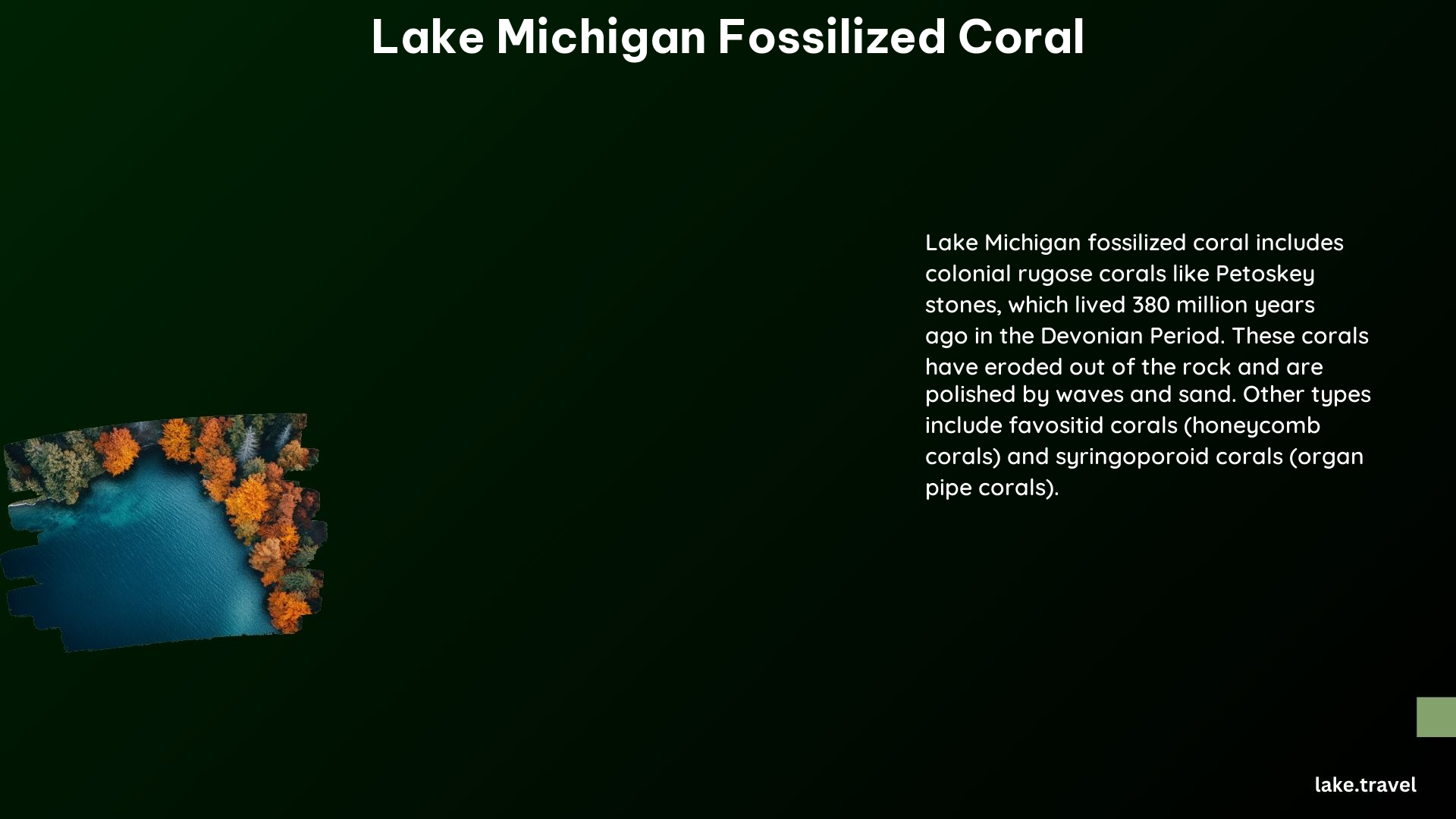Lake Michigan is renowned for its rich fossil deposits, particularly the captivating fossilized coral that can be found along its shores. These ancient marine creatures, dating back to the Devonian Period, offer a fascinating window into the region’s geological history.
Typical Age of Fossilized Coral

The fossilized coral found on Lake Michigan’s shores typically dates back to the Devonian Period, approximately 380-400 million years ago. During this time, the area was covered by a shallow saltwater sea known as the Silurian Sea, providing the ideal conditions for the growth and preservation of these marine organisms.
Preservation of Fossilized Coral Formations

The fossilized coral formations from Lake Michigan have been preserved through a remarkable process. As the coral organisms became buried beneath layers of water and earth, they were shielded from oxygen, allowing their organic matter to resist decomposition. Over time, minerals seeped in, replacing the organic tissue and eventually hardening into the fossils we see today. The surrounding rock layers, often made of different minerals, have eroded or worn away at different rates, leaving the fossils intact and visible.
Common Types of Fossilized Coral
The shores of Lake Michigan are home to a variety of fossilized coral species, each with its unique characteristics:
- Petoskey Stone (Hexagonaria percarinatum): This colonial coral is characterized by its star-shaped pattern and large, unevenly shaped hexagonal openings (corallites) with thin lines radiating from the central pillar.
- Charlevoix Stone (Favosites): A colonial coral with a distinctive honeycomb pattern, the Charlevoix Stone is known for its small, rounded, and smoothed appearance due to wave erosion.
- Honeycomb Corals (Favositid Corals): These extinct colonial corals feature a lace-like pattern of small openings, where the coral polyps once lived.
- Rugose Corals: These colonial rugose corals, also from the Devonian Period, are known for their eroded and polished appearance.
The Role of Glaciers in Fossil Distribution
The glaciers that carved out the Great Lakes basin played a significant role in the distribution of these fossilized corals across the region. As the glaciers melted, they left behind the fossils, which can now be found along the shores of Lake Michigan, offering a glimpse into the area’s ancient marine life.
Beachcombing and Fossil Hunting
Fossil hunting is a popular activity among enthusiasts along Lake Michigan’s shores. Beachcombers can discover these fossilized corals, often polished by the waves and sand, and learn about the region’s rich geological history. The process of identifying and understanding these ancient marine creatures can be a captivating and educational experience for visitors and locals alike.
Conclusion
The fossilized coral found on the shores of Lake Michigan provides a unique and fascinating glimpse into the region’s ancient past. These ancient marine organisms, preserved through a remarkable geological process, offer insights into the conditions and life forms that existed during the Devonian Period. Whether you’re a seasoned fossil hunter or simply curious about the area’s natural history, exploring the fossilized coral of Lake Michigan is a truly rewarding experience.
References
- Owlcatiion. (2023). Identifying the Fossils and Corals (Crinoids, Bryozoans, Etc.) on the Beach. Retrieved from https://owlcation.com/stem/I-Found-a-Fossil-and-Wondered
- Beachcombing Magazine. (2021). Identifying Fossils on the Great Lakes Shores. Retrieved from https://www.beachcombingmagazine.com/blogs/news/fossils-on-the-great-lakes-shores
- University of Michigan. (n.d.). MI Backyard Fossils Corals – UMORF. Retrieved from https://umorf.ummp.lsa.umich.edu/wp/mi-backyard-fossils-corals/
- Field Museum. (2017). Beachgoer’s Guide to Lake Michigan Fossils and Rocks. Retrieved from https://www.fieldmuseum.org/blog/beachgoers-guide-lake-michigan-fossils-and-rocks
- Schlitz Audubon. (2018). Lake Michigan Fossils Are a Trip Back in Time. Retrieved from https://www.schlitzaudubon.org/2018/09/19/lake-michigan-fossils-are-a-trip-back-in-time/.
